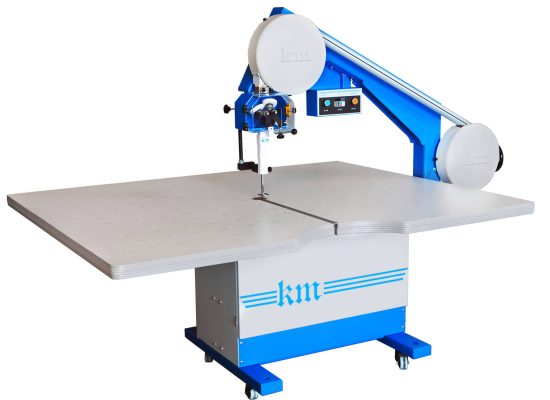Project Report For Fabric Cutting Machines
Introduction
Project Report for Fabric Cutting Machines is as follows.
The introduction of fabric-cutting machines has aided in automating this process and increasing production efficiency, hence boosting the growth of India’s textile sector. Fabric cutters are utilised in a range of industries, including the automotive, apparel, and medical fields, and are created to increase productivity on the production floor.
For high volume manufacturers, they are essential. Poorly cut fabrics may result in flaws or improper measurements, which may be challenging to fix if errors are made. Automatic cutting machines support mass-production facilities by preserving brand quality, lowering labour and raw material costs, and increasing efficiency.
Among all fabric cutting machines, the straight knife is the most commonly used knife in the garment business. The primary components of this machine are a base plate with small wheels attached at the bottom, allowing it to be readily moved on the cutting table. An electric motor is positioned on the stand with the help of a stand on the base plate.
There is a handle attached to the motor that allows the machine to be moved in various directions. The straight knife is inserted into the stand or upright. In front of the knife, there is a knife guard. A grinding wheel is located on the side of the straight knife, and it is used to sharpen the knife from time to time when cutting the fabric.
There are various types of fabric-cutting machines available in India, ranging from basic mechanical models to advanced computerized machines. Some of the popular types of fabric-cutting machines include straight knife-cutting machines, round knife-cutting machines, band knife-cutting machines, and die-cutting machines. Each type of machine is designed for a specific type of fabric and cutting application.

Benefits Of Fabric Cutting Machines
There are various advantages to employing fabric-cutting machines. For starters, these machines are extremely precise and accurate, ensuring that each cut is uniform and consistent. This decreases the possibility of waste and increases manufacturing efficiency.
fabric-cutting machines are faster than manual cutting, manufacturers can produce vast amounts of fabric in a short period of time. Finally, fabric-cutting machines are simple to use and maintain, making them an excellent choice for businesses of all sizes.
Hand cutting requires a huge number of people to manufacture at scale. When using a hand saw, you can only cut one or two layers of fabric at a time. Although hand cutting does not require a big initial investment, labour costs are significantly higher for firms that want to create huge quantities, which is unfavourable for the bulk of high-volume garment factories.
Project Report Sample on
Fabric Cutting Machines
Get Completely Custom Bankable Project Report
Market Potential Of Fabric Cutting Machines
The global fabric-cutting machines market is expected to reach US$ 7 billion by 2032, growing at a CAGR of 9% from 2022 to 2032.
Due to rising disposable income and shifting lifestyle preferences among consumers around the world, the demand for textile items is expanding globally, which is a major factor driving this market. The market for fabric cutting machines in India is diverse, with a wide range of customers.
The customers for fabric cutting machines include small and medium-scale textile manufacturers, garment manufacturers, and home textile manufacturers. The demand for fabric cutting machines is also increasing in the apparel and fashion industry due to the rise of e-commerce and the need for fast and efficient production.
Fabric-cutting machine sales are predicted to rise in response to rising demand for precise garment or fabric cutting and little material waste. Furthermore, continued advances in fabric-cutting technologies are expected to revolutionise the textile sector. This is projected to provide the market with numerous prospects for expansion.
The changing fashion trends and the expanding influence of social media around the world are expected to drive up total sales of fabric-cutting equipment. Aside from that, the growing need to prevent environmental damage and worker abuse is expected to drive demand for fabric-cutting equipment in the future years.

